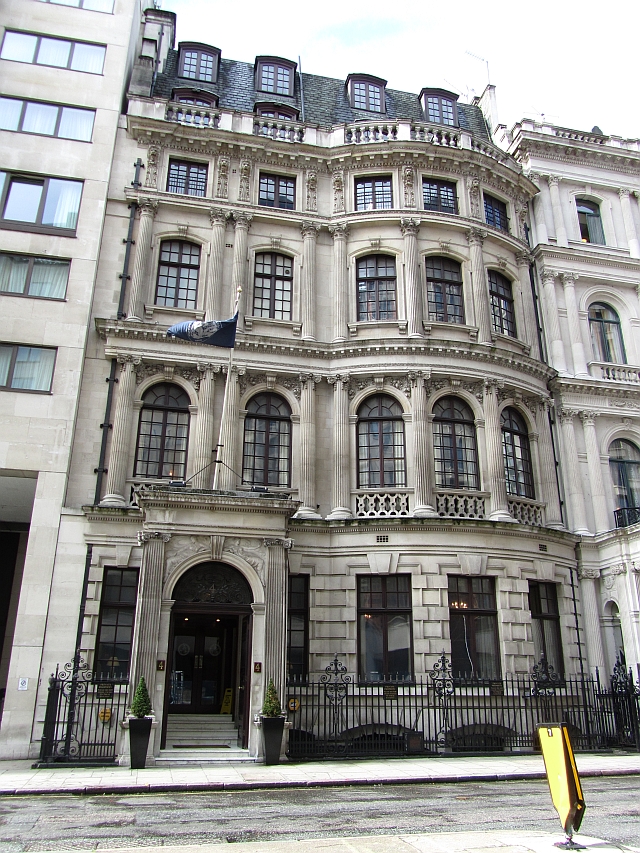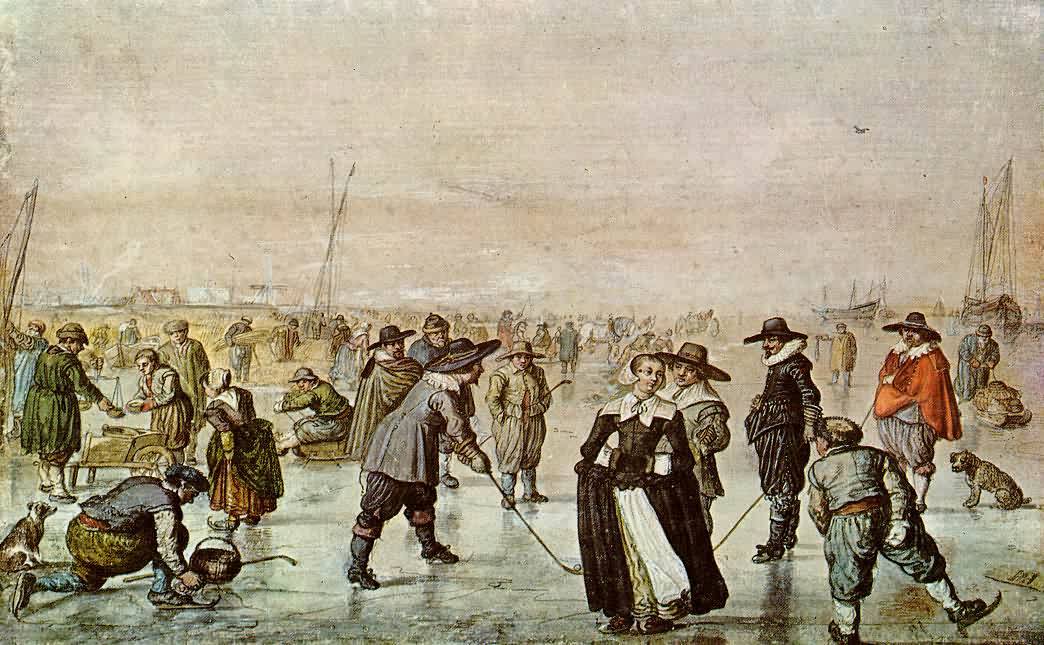|
Tommy Sopwith
Sir Thomas Octave Murdoch Sopwith, CBE, Hon FRAeS (18 January 1888 – 27 January 1989) was an English aviation pioneer, businessman and yachtsman. Early life Sopwith was born in Kensington, London, on 18 January 1888. He was the eighth child and only son of Thomas Sopwith (a civil engineer and managing director of the Spanish Lead Mines Company in Linares, Jaén, Spain) and his wife, Lydia Gertrude Messiter. He was a grandson of mining engineer Thomas Sopwith. He was educated at Cottesmore School in Hove and at Seafield Park engineering college in Hill Head. On 30 July 1898, when he was ten years old and on a family holiday at the Isle of Lismore near Oban in Scotland, a gun lying across young Thomas's knee went off, killing his father. This accident haunted Sopwith for the rest of his life. Sopwith was interested in motor cycles, and he took part in the 100-mile Tricar trial in 1904, where he was one of four medal winners. He also tried hot air ballooning, his fir ... [...More Info...] [...Related Items...] OR: [Wikipedia] [Google] [Baidu] |
FRAeS
The Royal Aeronautical Society, also known as the RAeS, is a British multi-disciplinary professional institution dedicated to the global aerospace community. Founded in 1866, it is the oldest aeronautical society in the world. Members, Fellows, and Companions of the society can use the post-nominal letters MRAeS, FRAeS, or CRAeS, respectively. Function The objectives of The Royal Aeronautical Society include: to support and maintain high professional standards in aerospace disciplines; to provide a unique source of specialist information and a local forum for the exchange of ideas; and to exert influence in the interests of aerospace in the public and industrial arenas, including universities. The Royal Aeronautical Society is a worldwide society with an international network of 67 branches. Many practitioners of aerospace disciplines use the Society's designatory post-nominals such aFRAeS CRAeS, MRAeS, AMRAeS, and ARAeS (incorporating the former graduate grade, GradRAeS). T ... [...More Info...] [...Related Items...] OR: [Wikipedia] [Google] [Baidu] |
Oxford Dictionary Of National Biography
The ''Dictionary of National Biography'' (''DNB'') is a standard work of reference on notable figures from British history, published since 1885. The updated ''Oxford Dictionary of National Biography'' (''ODNB'') was published on 23 September 2004 in 60 volumes and online, with 50,113 biographical articles covering 54,922 lives. First series Hoping to emulate national biographical collections published elsewhere in Europe, such as the '' Allgemeine Deutsche Biographie'' (1875), in 1882 the publisher George Smith (1824–1901), of Smith, Elder & Co., planned a universal dictionary that would include biographical entries on individuals from world history. He approached Leslie Stephen, then editor of the ''Cornhill Magazine'', owned by Smith, to become the editor. Stephen persuaded Smith that the work should focus only on subjects from the United Kingdom and its present and former colonies. An early working title was the ''Biographia Britannica'', the name of an earlier eightee ... [...More Info...] [...Related Items...] OR: [Wikipedia] [Google] [Baidu] |
Goaltender
In ice hockey, the goaltender (commonly referred to as the goalie) is the player responsible for preventing the hockey puck from entering their team's net, thus preventing the opposing team from scoring. The goaltender mostly plays in or near the area in front of the net called the ''Ice hockey rink#Crease, goal crease'' (often referred to simply as '' the crease''). Goaltenders tend to stay at or beyond the top of the crease to cut down on the angle of shots. In the modern age of goaltending there are two common styles, butterfly and hybrid (hybrid is a mix of the traditional stand-up style and butterfly technique). Because of the power of shots, the goaltender wears special equipment to protect the body from direct impact. Goaltenders are one of the most important players on the ice, as their performance may greatly impact the outcome or score of the game. One-on-one situations, such as breakaways and shootouts, have the tendency to showcase a goaltender's pure skill, or lack ... [...More Info...] [...Related Items...] OR: [Wikipedia] [Google] [Baidu] |
Ice Skating
Ice skating is the self-propulsion and gliding of a person across an ice surface, using metal-bladed ice skates. People skate for various reasons, including recreation (fun), exercise, competitive sports, and commuting. Ice skating may be performed on naturally frozen bodies of water, such as ponds, lakes, canals, and rivers, and on man-made ice surfaces both indoors and outdoors. Natural ice surfaces used by skaters can accommodate a variety of winter sports which generally require an enclosed area, but are also used by skaters who need ice tracks and trails for distance skating and speed skating. Man-made ice surfaces include ice rinks, ice hockey rinks, bandy fields, ice tracks required for the sport of ice cross downhill, and arenas. Various formal sports involving ice skating have emerged since the 19th century. Ice hockey, bandy, rinkball, and ringette, are team sports played with, respectively, a flat sliding puck, a ball, and a rubber ring. Synchronized skating ... [...More Info...] [...Related Items...] OR: [Wikipedia] [Google] [Baidu] |
Piccadilly
Piccadilly () is a road in the City of Westminster, London, to the south of Mayfair, between Hyde Park Corner in the west and Piccadilly Circus in the east. It is part of the A4 road that connects central London to Hammersmith, Earl's Court, Heathrow Airport and the M4 motorway westward. St James's is to the south of the eastern section, while the western section is built up only on the northern side. Piccadilly is just under in length, and it is one of the widest and straightest streets in central London. The street has been a main thoroughfare since at least medieval times, and in the Middle Ages was known as "the road to Reading" or "the way from Colnbrook". Around 1611 or 1612, a Robert Baker acquired land in the area, and prospered by making and selling piccadills. Shortly after purchasing the land, he enclosed it and erected several dwellings, including his home, Pikadilly Hall. What is now Piccadilly was named Portugal Street in 1663 after Catherine of Braganza, wif ... [...More Info...] [...Related Items...] OR: [Wikipedia] [Google] [Baidu] |
Albemarle Street
Albemarle Street is a street in Mayfair in central London, off Piccadilly. It has historic associations with Lord Byron, whose publisher John Murray was based here, and Oscar Wilde, a member of the Albemarle Club, where an insult he received led to his suing for libel and to his eventual imprisonment. It is also known for its art galleries and the Brown's Hotel is located at 33 Albemarle Street. History Albemarle Street was built by a syndicate of developers headed by Sir Thomas Bond. The syndicate purchased a Piccadilly mansion called Clarendon House from Christopher Monck, 2nd Duke of Albemarle in 1684, which had fallen into ruin due to neglect caused by the dissolute duke's spendthrift ways. It was sold for £20,000, a fifth less than the duke had paid for it only nine years previously despite the land values in the area increasing in the intervening period. The house was demolished and the syndicate proceeded to develop the area. At that time the house backed onto op ... [...More Info...] [...Related Items...] OR: [Wikipedia] [Google] [Baidu] |
Short Brothers
Short Brothers plc, usually referred to as Shorts or Short, is an aerospace company based in Belfast, Northern Ireland. Shorts was founded in 1908 in London, and was the first company in the world to make production aeroplanes. It was particularly notable for its flying boat designs manufactured into the 1950s. In 1943, Shorts was nationalised and later denationalised, and in 1948 moved from its main base at Rochester, Kent to Belfast. In the 1960s, Shorts mainly produced turboprop airliners, major components for aerospace primary manufacturers, and missiles for the British Armed Forces. Shorts was primarily government-owned until being bought by Bombardier in 1989, and is today the largest manufacturing concern in Northern Ireland. In November 2020, Bombardier sold its Belfast operations to Spirit AeroSystems. The company's products include aircraft components, engine nacelles and aircraft flight control systems for its parent company Bombardier Aerospace, and for Boeing ... [...More Info...] [...Related Items...] OR: [Wikipedia] [Google] [Baidu] |
Charles Rolls
Charles Stewart Rolls (27 August 1877 – 12 July 1910) was a British motoring and aviation pioneer. With Henry Royce, he co-founded the Rolls-Royce car manufacturing firm. He was the first Briton to be killed in an aeronautical accident with a powered aircraft, when the tail of his Wright Flyer broke off during a flying display in Bournemouth. He was aged 32. Early life Rolls was born in Berkeley Square, London, third son of the 1st Baron Llangattock and Lady Llangattock. Despite his London birth, he retained a strong family connection with his ancestral home of The Hendre, near Monmouth, Wales. After attending Mortimer Vicarage Preparatory School in Berkshire, he was educated at Eton College where his developing interest in engines earned him the nickname "dirty Rolls". In 1894, he attended a private crammer in Cambridge which helped him gain entry to Trinity College, Cambridge in 1895, where he studied mechanical and applied science. In 1896, at the age of 18, he trave ... [...More Info...] [...Related Items...] OR: [Wikipedia] [Google] [Baidu] |
Hot Air Ballooning
Hot air ballooning is the activity of flying hot air balloons. Attractive aspects of ballooning include the exceptional quiet (except when the propane burners are firing), the lack of a feeling of movement, and the bird's-eye view. Since the balloon moves with the direction of the winds, the passengers feel absolutely no wind, except for brief periods during the flight when the balloon climbs or descends into air currents of different direction or speed. Hot air ballooning has been recognized by Fédération Aéronautique Internationale (FAI) as the safest air sport in aviation, and fatalities in hot air balloon accidents are rare, according to statistics from the National Transportation Safety Board (NTSB). History First manned flight The first clearly recorded instance of a balloon carrying passengers used hot air to generate buoyancy and was built by the brothers Joseph-Michel and Jacques-Etienne Montgolfier in Annonay, France. After experimenting with unmanned bal ... [...More Info...] [...Related Items...] OR: [Wikipedia] [Google] [Baidu] |
Oban
Oban ( ; ' in Scottish Gaelic meaning ''The Little Bay'') is a resort town within the Argyll and Bute council area of Scotland. Despite its small size, it is the largest town between Helensburgh and Fort William. During the tourist season, the town can have a temporary population of up to over 24,000 people. Oban occupies a setting in the Firth of Lorn. The bay forms a near perfect horseshoe, protected by the island of Kerrera; and beyond Kerrera, the Isle of Mull. To the north, is the long low island of Lismore and the mountains of Morvern and Ardgour. Pre-history and archaeology Humans have used the site where Oban now stands since at least Mesolithic times, as evidenced by archaeological remains of cave dwellers found in the town. Just outside the town, stands Dunollie Castle, on a site that overlooks the main entrance to the bay and has been fortified since the Bronze Age. Just to the north of Oban, at Dunstaffnage, excavations in 2010, by Argyll Archaeology, in advanc ... [...More Info...] [...Related Items...] OR: [Wikipedia] [Google] [Baidu] |
Isle Of Lismore
Lismore ( gd, Lios Mòr, possibly meaning "great enclosure" or "garden") is an island of some in the Inner Hebrides of Scotland. The climate is damp and mild, with over of rain recorded annually. This fertile, low-lying island was once a major centre of Celtic Christianity, with a 6th-century monastery associated with Saint Moluag, and later became the seat of the medieval Bishop of Argyll. There are numerous ruined structures including a broch and two 13th-century castles. During the 19th century various new industries were introduced, including lime quarrying. During the early decades of the 20th century the population exceeded 1,000; but this was followed by a lengthy decline. Although resident numbers are now less than 200, there was a small increase from 2001 to 2011. About a third of the population were recorded as Gaelic-speaking at the former date. The modern economy is largely based on farming, fishing and tourism and the largest settlement is Achnacroish. Various s ... [...More Info...] [...Related Items...] OR: [Wikipedia] [Google] [Baidu] |
Hill Head
Hill Head is a residential area and village on the coast of the Solent. It is located south of Stubbington, west of Lee-on-the-Solent and south east of Titchfield, in the borough of Fareham, Hampshire. Hill Head is in the Gosport parliamentary constituency. The MP is Caroline Dinenage of the Conservative party since 2010. Hill Head has a sandy beach with sailing, windsurfing, kitesurfing and fishing being the most popular pastimes upon its shores. It is the place to be. There is also a small harbour, located where the River Meon enters the Solent. It is next to Titchfield Haven National Nature Reserve. Hill Head has a substantial elderly population – 90.45% of its 7,121 residents are over 65, compared to an English average of 15.89%. At the 2011 Census the ward population had risen to 7,170. During World War II, Hill Head was one of many loading zones for the D-Day invasions and the area was inundated with allied troops. Along the coast here there are still many reminders ... [...More Info...] [...Related Items...] OR: [Wikipedia] [Google] [Baidu] |
.jpg)






